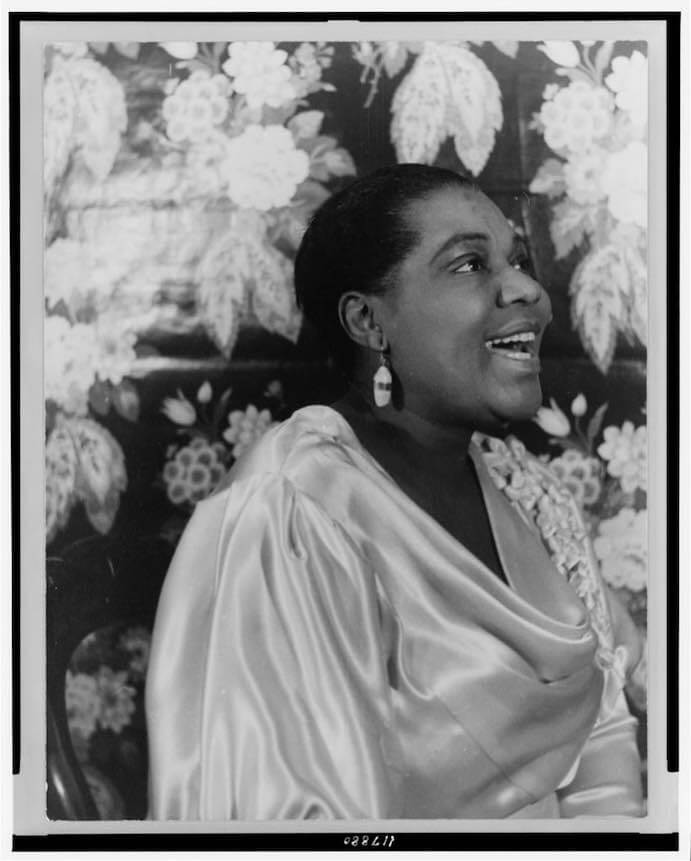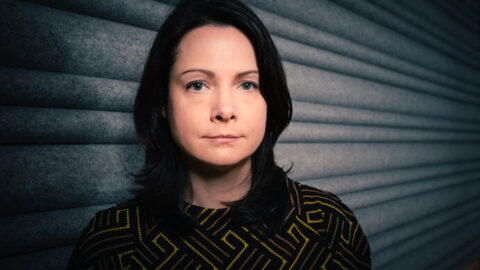Pianist and composer Kris Davis is the Associate Program Director of Creative Development for the Institute of Jazz and Gender Justice at Berklee College of Music, where in addition to teaching she develops programs that do corrective work, modifying the way jazz is perceived and presented and rendering equal visibility for future contributors.
One hundred years ago, women were unable to vote. One hundred years ago in the jazz world, how was the jazz patriarchy operating within the general omnipresent one, and who was being overlooked?
This is a very difficult question to answer because we have limited historical information about women jazz musicians active in the 1920s. Pianist and composer Lil Hardin Armstrong is among the few to gain recognition for her compositions and contribution to jazz. Bessie Smith was widely popular and had a critical influence on many budding vocalists. But patriarchy has contributed to the erasure of women instrumentalists over many generations; today, we’re left with very little historical information on women instrumentalists and composers who, indeed, were contributing and influencing the future of jazz.

What are the most effective actions you have observed in your time as both a program director and performing musician, and how is the jazz landscape changing for young students and emerging artists?
There is a heightened awareness around gender and racial equity among young people. At the Berklee Institute of Jazz and Gender Justice, discussions around equity pair equally with learning the mechanics and theory of jazz; in fact, the two intersect on a daily basis via greater representation of women composers in the repertoire we select for ensembles, the gender balance we facilitate within our student groups, and discussions we hold with guest artists and faculty about their views around gender and racial equity and their own personal struggles as artists.
Having regular, direct discussions about the history of patriarchy in jazz and the ongoing gender and racial disparity within music is the most effective action music institutions can take toward achieving meaningful, lasting change. If young people are to be the ones who implement change, we need to provide them the opportunities to have those conversations now: What are the issues? How do we want the world to look 50 years from now? What can I do personally to contribute to positive change?
Young women are socialized to pursue perfection, avoid mistakes, and temper their confidence–the opposite of what drives exciting improvisation and musical growth. This societal burden can be exhausting to overcome even as institutional opportunities become more equitable. How can we cultivate environments that encourage confidence and daring regardless of gender?
We need to normalize gender balance in education and in our musical communities as much as we need to teach and reward creativity and self-expression in jazz.
Because jazz has become institutionalized over the years, higher education is now one of the major gatekeepers in establishing equity and embracing diversity within our musical communities. Young women and men, as well as gender non-conforming and transgender students, require access to a diverse group of educators, which will ultimately provide them access to a broad range of experiences and forms of self-expression in music. By visiting institutions domestically and internationally as a jazz educator, I have witnessed firsthand that certain institutions are more aligned with cultivating diversity than others, but most institutions have a long way to go in realizing this vision through their hiring practices.
For decades, jazz education has focused on teaching within a narrow scope, specifically the jazz canon of the 1950s and 1960s–a practice saliently reflective of racism and patriarchy. As with any tradition, studying its language, craft, and historical context provides necessary, invaluable understanding; unfortunately, along with teaching these critical elements of the music, guard rails have been imposed as to what jazz is and isn’t. For instance, this criteria includes playing rhythm changes at extremely fast tempos or knowing a lot of jazz standards by memory. In the past, if a young person just starting out in jazz did not have these particular skills together, they would be ridiculed and kicked off the bandstand. This criteria and mode of mentorship has seeped its way into jazz education; Not surprisingly, this approach of mentorship has aged poorly, and continues to alienate many talented young musicians–especially women–pushing them away from the music.
As a young person, I understood jazz to be a music of improvisation and innovation, the search for self-expression through sound, and a reflection of the here and now. I have built a career as a pianist and composer on these ideals. As an educator, I believe that if institutions adopt this value system in their programs and modes of teaching, that a more truthful and inclusive approach will emerge, benefiting the community and encouraging young artists to delve into the creative process from a place of curiosity and freedom. Students from all over the world with all sorts of musical backgrounds, find each other in musical institutions–if music programs look at the diversity of their students body as an opportunity to embrace not just gender and racial diversity, but musical diversity, jazz can be an incredible framework in which meaningful collaboration and creation can flourish.

This work is critical at the institutional level. What step could individual artists–and audience members!–take who wish to contribute to these changes, including those who may work in different genres or disciplines?
The history of jazz is one of mentorship, of learning on the bandstand. Consequently, acquiring a position as a side person is highly coveted. These are the positions that allow fledgling artists to begin building a career as a player, while teaching them, by example, how to lead a band and compose repertoire. In the past, few of these positions have been afforded to women; those who have received these opportunities have gone on to be great musicians and leaders.
Jazz will take huge strides towards gender equity when established artists actively review their hiring practices and reflect on to whom they’re providing these opportunities.
Currently, there are many initiatives among grant programs, festivals, and venues to support women band leaders. This shift is essential for promoting change, but grossly overlooked is the issue of mentorship on the bandstand. By providing established artists, both male and female, with means and performance opportunities to facilitate diverse hiring practices within their own projects, we as a community send a message that gender equity is work for both men and women; that we will only have meaningful, lasting change if, as a community, we make equity a priority together.
Audiences can support gender equity by supporting women artists—and/or male artists who hire women in their projects—by going to their concerts and buying their music. Audiences themselves need greater gender balance; the makeup of these audiences, in my experience, leans male. I believe this phenomenon directly relates to the lack of gender equity visible on the bandstand (that disparity has put many women off of the experience of going to a jazz concert). But as the makeup of groups shifts, I think devoted fans will continue to play an important role in helping to broaden the audience base.
Lastly, tell us some women jazz artists that should have their own museums. And if you were introducing someone to jazz for the very first time, what recordings or names would you give them?
Here is a list of excellent women performers and composers to check out:
Mary Lou Williams, Carla Bley, Geri Allen, Marilyn Crispell, Terri Lyne Carrington, Irene Schweizer, Maria Schneider, Angelica Sanchez, Renee Rosnes, Ingrid Laubrock, Mary Halvorson, Angelica Sanchez, Nicole Mitchell, Ingrid Jensen, Tomeka Reid, and Sylvie Courvoiser.
UNEVEN MEASURES is a series dedicated to amplifying today’s women, trans, and nonbinary artists on the centennial anniversary of the 19th Amendment leading up to the 2020 presidential election. This series is made possible through a generous grant from The Elizabeth & Michel Sorel Charitable Organization Inc. to the American Composers Forum and their partnership with I CARE IF YOU LISTEN. The Sorel Organization is committed to supporting gender equity in music and addressing systemic inequities by providing greater visibility for women musicians from underrepresented communities.
I CARE IF YOU LISTEN is a program of the American Composers Forum, funded with generous donor and institutional support. A gift to ACF helps support the work of ICIYL. Editorial decisions are made at the sole discretion of the editor-in-chief. For more on ACF, visit the “At ACF” section or composersforum.org.
























